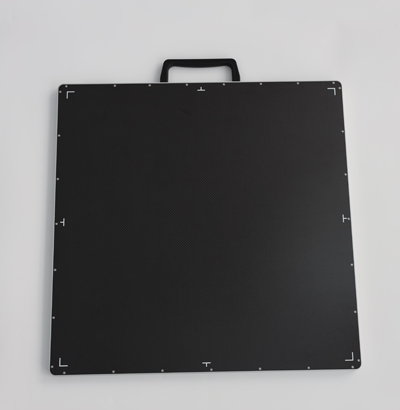Flat panel detectors have revolutionized the field of medical imaging in many ways. These digital imaging systems are becoming increasingly popular due to their high-resolution capabilities and ability to capture previously unobtainable detailed images. While flat panel detectors are commonly used in human medical imaging, they have also received a lot of attention in the veterinary field, especially when photographing small animals.
One of the main advantages of using a flat panel detector to photograph small animals is the enhanced image quality. These detectors use a thin flat panel instead of traditional X-ray film. This technology enables the resulting images to have greater precision and clarity, making it easier for veterinarians to accurately diagnose and treat patients. When imaging small animals such as rodents or birds, obtaining clear and detailed images is critical because even small abnormalities can be noticeable.
Another significant benefit of using a flat panel detector to photograph small animals is the reduced radiation exposure. Flat panel detectors require much lower levels of radiation to capture images than conventional X-ray film. This is especially important when working with small animals, as their bodies are more sensitive to radiation. By using flat panel detectors, veterinarians can limit the exposure of small animals to harmful radiation while still obtaining high-quality images for diagnostic purposes.
Flat panel detectors offer tremendous versatility when imaging small animals. These detectors can be easily manipulated and adjusted to capture images from different angles and positions, allowing veterinarians to obtain a comprehensive view of an animal’s anatomy. Additionally, flat panel detectors can be used for static and dynamic imaging, allowing veterinarians to capture real-time images of animals in motion. This is especially useful when diagnosing conditions related to joints, muscles, or the respiratory system.
Flat panel detectors used to photograph small animals often come with specialized software and features designed specifically for veterinarians. These features include image enhancement tools, measurement tools, and the ability to easily store and analyze images. This allows veterinarians to efficiently track and monitor the progress of treatment and compare images over time to identify any changes or improvements. The integration of these features makes flat panel detectors an invaluable tool in veterinary clinics and research facilities.
Flat panel detectors have become an important technology in the veterinary field, especially when photographing small animals. With their superior image quality, reduced radiation exposure, versatility, and specialized features, flat panel detectors offer veterinarians tremendous benefits when diagnosing and treating small animal patients. As technology continues to advance, we can expect more advances in the field of medical imaging, further enhancing small animal care and treatment options.
Flat panel detectors have revolutionized the field of medical imaging in many ways. These digital imaging systems are becoming increasingly popular due to their high-resolution capabilities and ability to capture previously unobtainable detailed images. While flat panel detectors are commonly used in human medical imaging, they have also received a lot of attention in the veterinary field, especially when photographing small animals. One of the main advantages of using a flat panel detector to photograph small animals is the enhanced image quality. These detectors use a thin flat panel instead of traditional X-ray film. This technology enables the resulting images to have greater precision and clarity, making it easier for veterinarians to accurately diagnose and treat patients. When imaging small animals such as rodents or birds, obtaining clear and detailed images is critical because even small abnormalities can be noticeable. Another significant benefit of using a flat panel detector to photograph small animals is the reduced radiation exposure. Flat panel detectors require much lower levels of radiation to capture images than conventional X-ray film. This is especially important when working with small animals, as their bodies are more sensitive to radiation. By using flat panel detectors, veterinarians can limit the exposure of small animals to harmful radiation while still obtaining high-quality images for diagnostic purposes. Flat panel detectors offer tremendous versatility when imaging small animals. These detectors can be easily manipulated and adjusted to capture images from different angles and positions, allowing veterinarians to obtain a comprehensive view of an animal’s anatomy. Additionally, flat panel detectors can be used for static and dynamic imaging, allowing veterinarians to capture real-time images of animals in motion. This is especially useful when diagnosing conditions related to joints, muscles, or the respiratory system. Flat panel detectors used to photograph small animals often come with specialized software and features designed specifically for veterinarians. These features include image enhancement tools, measurement tools, and the ability to easily store and analyze images. This allows veterinarians to efficiently track and monitor the progress of treatment and compare images over time to identify any changes or improvements. The integration of these features makes flat panel detectors an invaluable tool in veterinary clinics and research facilities. Flat panel detectors have become an important technology in the veterinary field, especially when photographing small animals. With their superior image quality, reduced radiation exposure, versatility, and specialized features, flat panel detectors offer veterinarians tremendous benefits when diagnosing and treating small animal patients. As technology continues to advance, we can expect more advances in the field of medical imaging, further enhancing small animal care and treatment options.
Post time: Jul-05-2023


